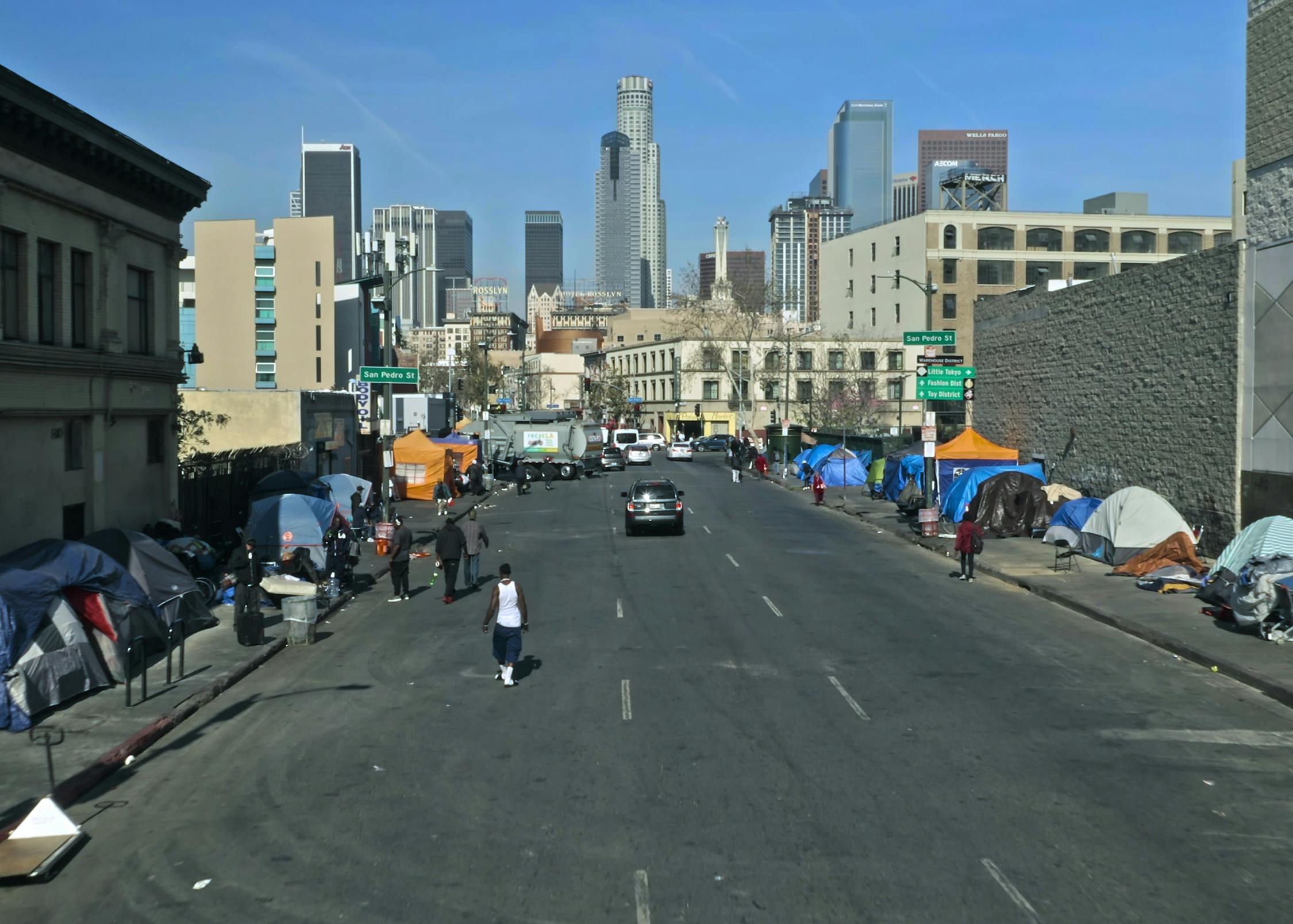Filmmakers Jon Shenk and Pedro Kos discuss their journey documenting the effects of the homelessness crisis.
In 2016, Dan Duane was assigned a story for The New York Times about the homelessness crisis in San Francisco, where he lived. During his research, Duane spent time in a few of the encampments near his home. As his proximity to the community increased, the initial sense of otherness and fear that he felt began to fade, and he experienced the city through the lens of necessity — a faucet on the side of a building became a source of water for cooking, a park bench became a kind of living room, a grassy median became a campground. Duane began to think, If I ever found myself without a place to stay or a car to drive, of course, this is where I would go. This is how I would try to survive.
Among the many who read that article were filmmakers Jon Shenk and Pedro Kos, who at the time were grappling with the idea of crafting a documentary around the subject of homelessness. “We were really influenced early on by Duane, who ended up being a story consultant on the film,” says Shenk. “That was really one of the early sparks in our minds.” Over the next three years, Shenk and Kos focused on making their vision a reality. The result was a short film entitled Lead Me Home, which offers an intimate portrait of life for people experiencing homelessness and those attempting to address the crisis in Los Angeles, San Francisco, and Seattle.
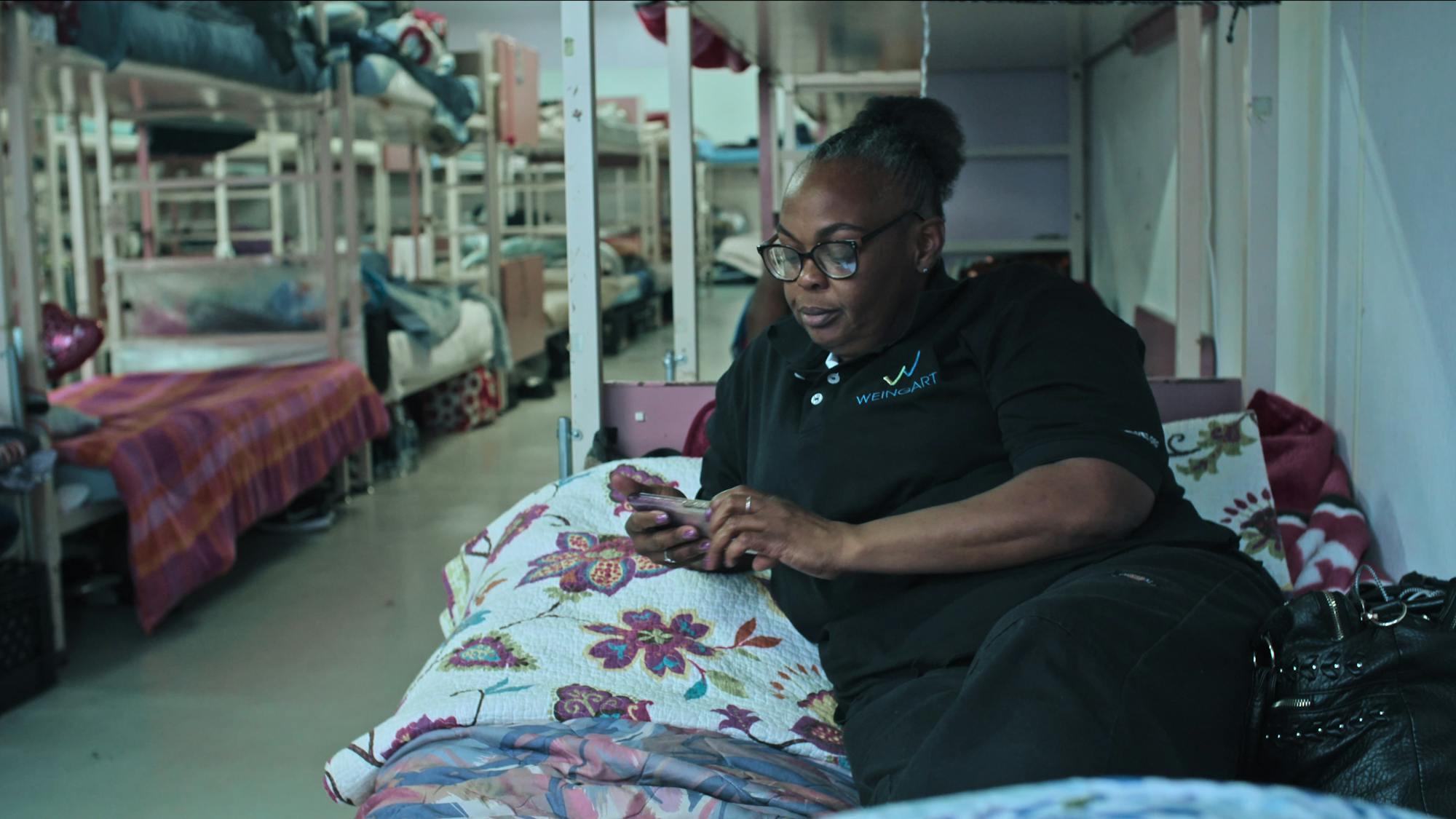
This isn’t the first project on which Shenk and Kos have joined forces. Previously, Kos was the editor on Shenk’s feature film The Island President. This time around, not only do the pair share co-directing responsibilities, but Shenk serves as cinematographer on the film and Kos as editor. “For me, it was a dream collaboration,” says Kos. “We definitely pushed each other, but we were always so excited and so moved by the same things.” For Shenk, the feeling is mutual: “We got to figure out a way to shift the audience’s perspective on this issue that I think a lot of people have very strong opinions about, and we pushed each other to places that maybe neither of us would have gone alone.”
After opening with personal interviews of a handful of homeless individuals, the filmmakers take us to shelters, counseling sessions, and government offices where the fallout of homelessness is addressed. As a viewer, it’s impossible not to return to the people we meet at the outset of this searching documentary, the problems they face as individuals, and the issues that America deals with as a society. As Shenk puts it, “We see people on the streets in our own cities and immediately try to place blame on the people that are experiencing these problems. We tried to turn that on its head and really ask ourselves: What is going on here? Do we, as Americans, want to live in a society that has 500,000 to 600,000 people who don’t have a roof over their heads every night.”
Krista Smith: Why did you decide to take on the subject of homelessness, and how did you settle on the short film format?
Jon Shenk: When we started this film, Pedro and I made a pledge to each other that we were going to have no rules, that our only rule was that we would listen to our gut and do what we felt like we needed to do to express our emotional reaction to this problem. I live in San Francisco; Pedro lives in Los Angeles. People experiencing homelessness are part of our daily lives, whether we walk by them on the way to the grocery store or drive by encampments on the highway — it’s in the periphery of our lives all the time. I think everybody who lives in those cities can relate to that. Our north star in this film is that we wanted to figure out a way to personalize it, humanize, and really do the things that we’re normally afraid to do, which is actually get to know these folks and find out who they are. And then also show the context and how massive the problem is. The length really kind of found itself — we didn’t set out to make a feature or a short, but we found that this was kind of the sweet spot for the story.
How did you meet your subjects?
Pedro Kos: We have a long list, but it was thanks to organizations like LA Family Housing, The Center, and Larkin Street Youth in San Francisco that we started to approach people who were experiencing homelessness. I think it was just creating an open space of dialogue and trying to create some trust. As filmmakers, we’re documenting life. And unfortunately for a lot of these people who were generous enough to share their lives, this is one of the toughest moments in their lives. I’m so grateful to them for opening up and really sharing their stories. We wanted to meet as many people as possible, from all different situations and walks of life. That’s how we met one of our main characters, Luis, who you see throughout the film. We met him at the Lava Mae, an amazing organization in the Bay Area. They provide radical hospitality, as I say. It’s showers, it’s haircuts, and it’s mobile. So each day, they’re in a different location in the city. And a lot of people flock to that because they need those services; they need to take a shower, they need to get a haircut. Luis was there.
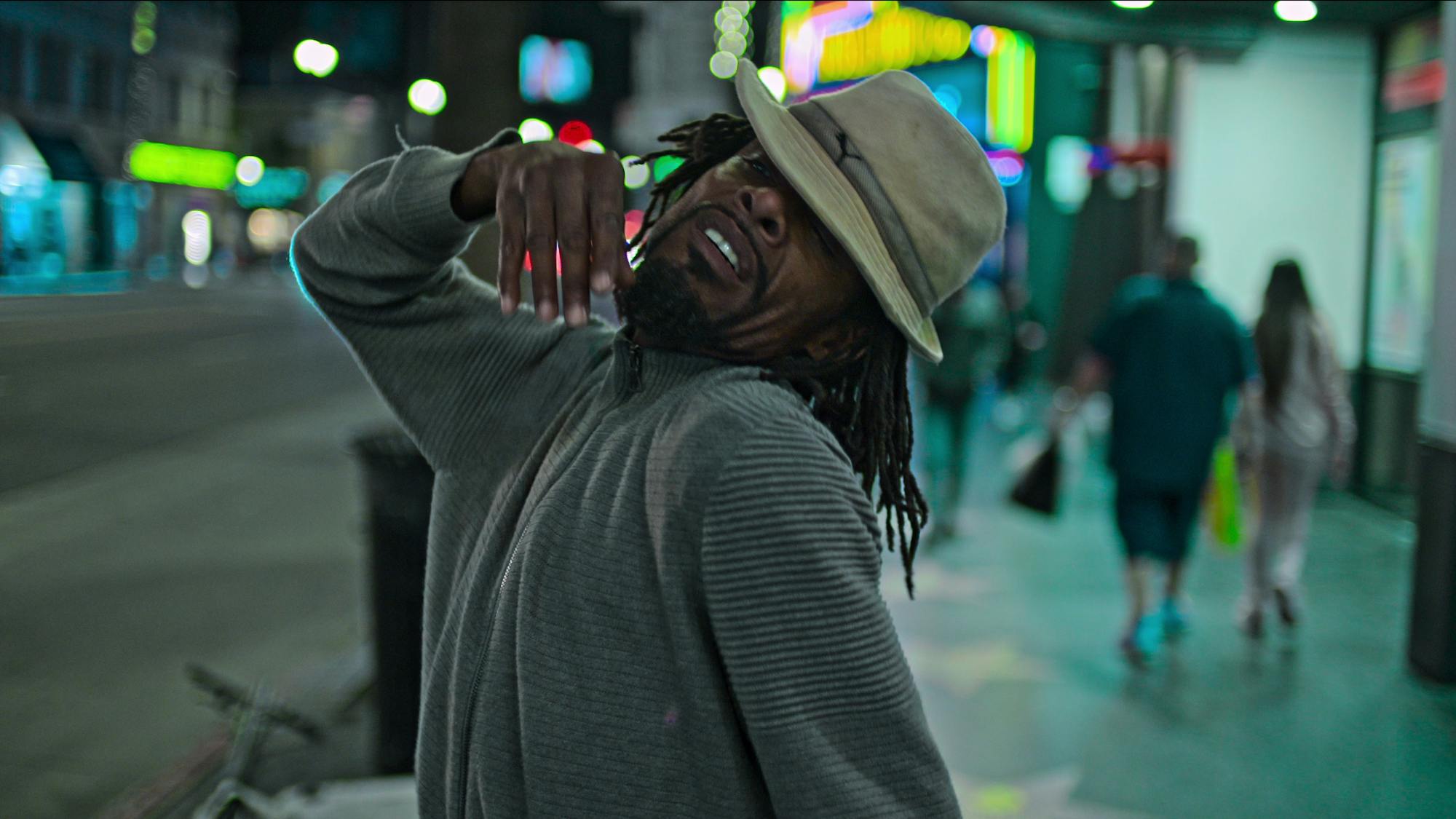
Ronnie “Futuristic Astaire” Willis
JS: And he has a great line in the film. He says, “You know, I do the same thing you do. It just takes me much longer because to take a shower, I have to figure out a way for somebody to watch my possessions on the street. I have to get on my bike, if somebody didn’t steal it the night before, and ride across town, and hope that it’s a day that Lava Mae is actually offering these services.” Luis was really a key character for us because he’s such a nice guy and such a generous guy. And he became a little bit of an ambassador for us to the world he inhabited.
You filmed right up until the spring of 2020. How did the beginning of the pandemic impact the end of your filming process?
JS: We filmed up until the early days of the pandemic. Of course, by that point, we had been working on this for years. We would go home at night knowing that these new friends of ours were sleeping a couple of miles away underneath an overpass. And that was emotionally just such a mind game to have in your life. When the pandemic hit, we thought of those people and we thought, well, we have to capture some of this because life was changing for all of us, including people experiencing homelessness. They felt it just as much as we did, if not more. The characters in our film were scared. They certainly don’t want to get sick. They don’t really have health insurance. As much as they could, they tried to socially distance. We have shots in the film where you see that tents in some encampments were spread out to create some distance and safety. It had a real impact.
PK: I think I was in Seattle the first time I heard that if average rents go up in a certain area by, let’s say, one or five or 10 percent, that you can actually measure the increase in the unhoused population of that area. It is something that’s very measurable. So many of us are one paycheck away or one medical emergency away from being in that situation.
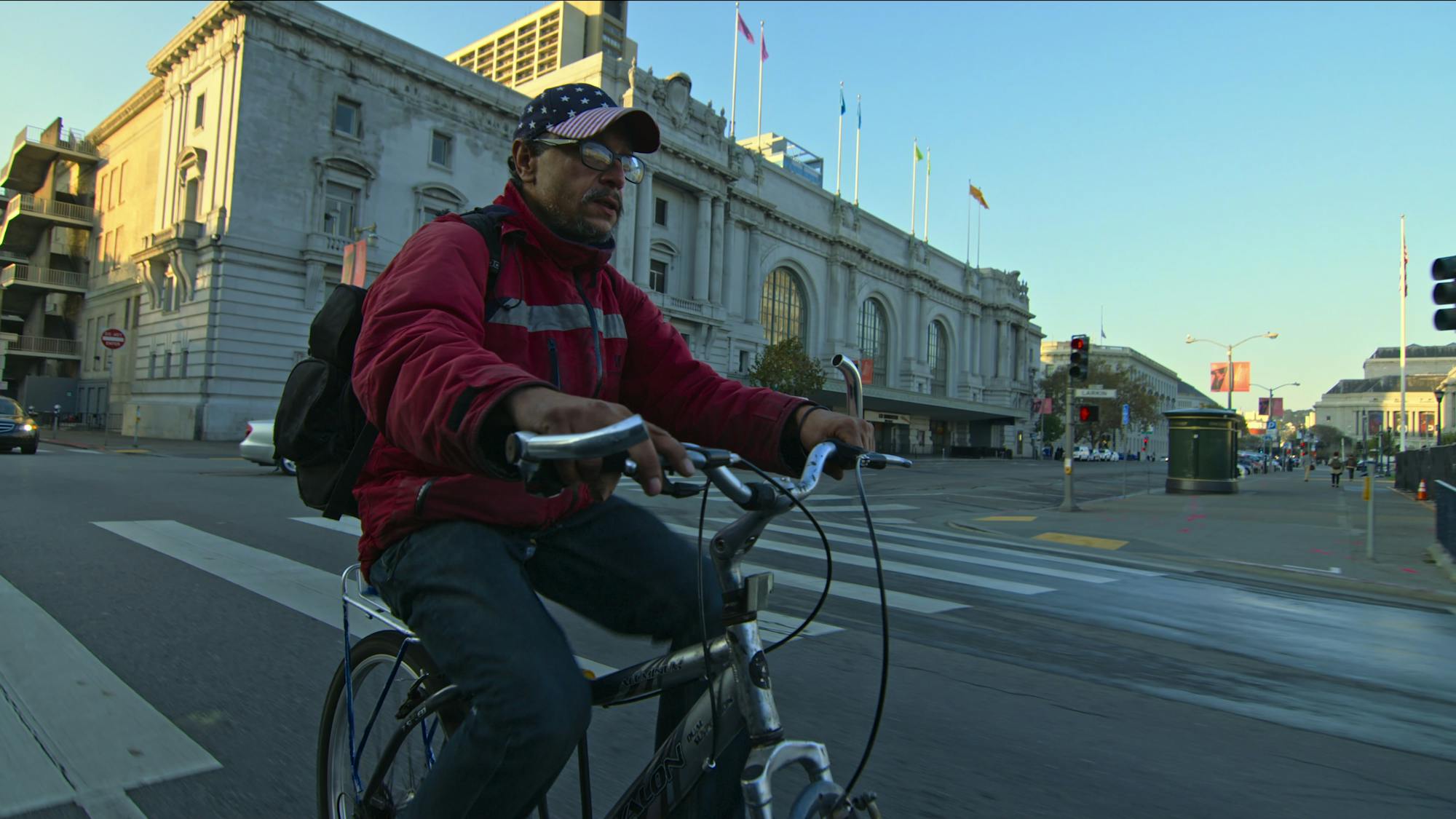
Luis Rivera Miranda
JS: In the film, you see this amazing character: Flora. She lives at the Union Rescue Mission, on Skid Row in Los Angeles. She works on the janitorial staff at a hospital, a couple of blocks away. She puts on her uniform and goes to work every day. And then at the end of her shift, she walks through what is really a refugee camp. If you’ve ever been to Skid Row in L.A., it’s people who can’t afford to live in what you might call normal society. And they’ve been permitted to camp out, down there in Skid Row. She walks through that and she walks into her shelter room where she sleeps with another 150 or so women in a room. And she watches Netflix on her phone. And then she gets up the next morning and does it again, but she doesn’t make enough money to pay for a single room in an apartment. So, that’s the kind of thing that was really important to show There are a lot of stories where people are working one or two jobs and still unable to afford housing.
Have any of your subjects seen the film?
JS: We had a very memorable day where Luis and his friend Ro Ro came to our offices in San Francisco and watched the film. They watched a rough cut, and they were just in tears. They laughed and cried because they recognized the reality of their lives for its lightness and its darkness. When we originally approached many of these people, we were as honest as we possibly could be — we’re trying to humanize this issue and we’d be grateful for you to share your story. And so I think they felt they were part of it. And I think they’re very proud of the honesty that they were able to bring to it and the generosity that they showed to share their time with us. So we’re certainly grateful and view them as more than just subjects. They actually really helped us understand.
PK: Absolutely. The other interesting aspect of it is that the organizations and the social workers who we’ve shown this to — usually their response is, “How fast can we get this out?” They have a very, very tough uphill climb right now. And they’re really reaching for something like this.
Why did you avoid offering up a proposed solution to the homelessness crisis at the end of the film?
JS: We wanted to show human life in this context, we didn’t want to show a savior coming in to solve it. We didn’t want to show heavy-handed statistics about how terrible this is. We wanted to create an experience that was about the humans that were experiencing this problem and meet them on their terms, at their level, in their world. And that’s what we’re proud of here. When our subjects saw the film, I think that’s what they recognized too.
PK: And it was really just to witness and to shift perspective. I think so many times the way we’re speaking about homelessness nowadays, it’s ignoring something that’s so basic and so core. So before we can talk about solutions, let’s look at this in a different way.
JS: We literally tried to shift perspectives in the film. So you see it from the point of view of a community meeting, where a neighborhood in San Francisco is debating in a public forum whether to build a shelter. You see it from the point of view of big city mayors in California, who meet on a monthly basis to compare notes and figure out solutions. You see it from the point of view of social workers who were sort of overwhelmed by their caseloads. We wanted to bring in all the ways in which this touches and affects the society in which we live.
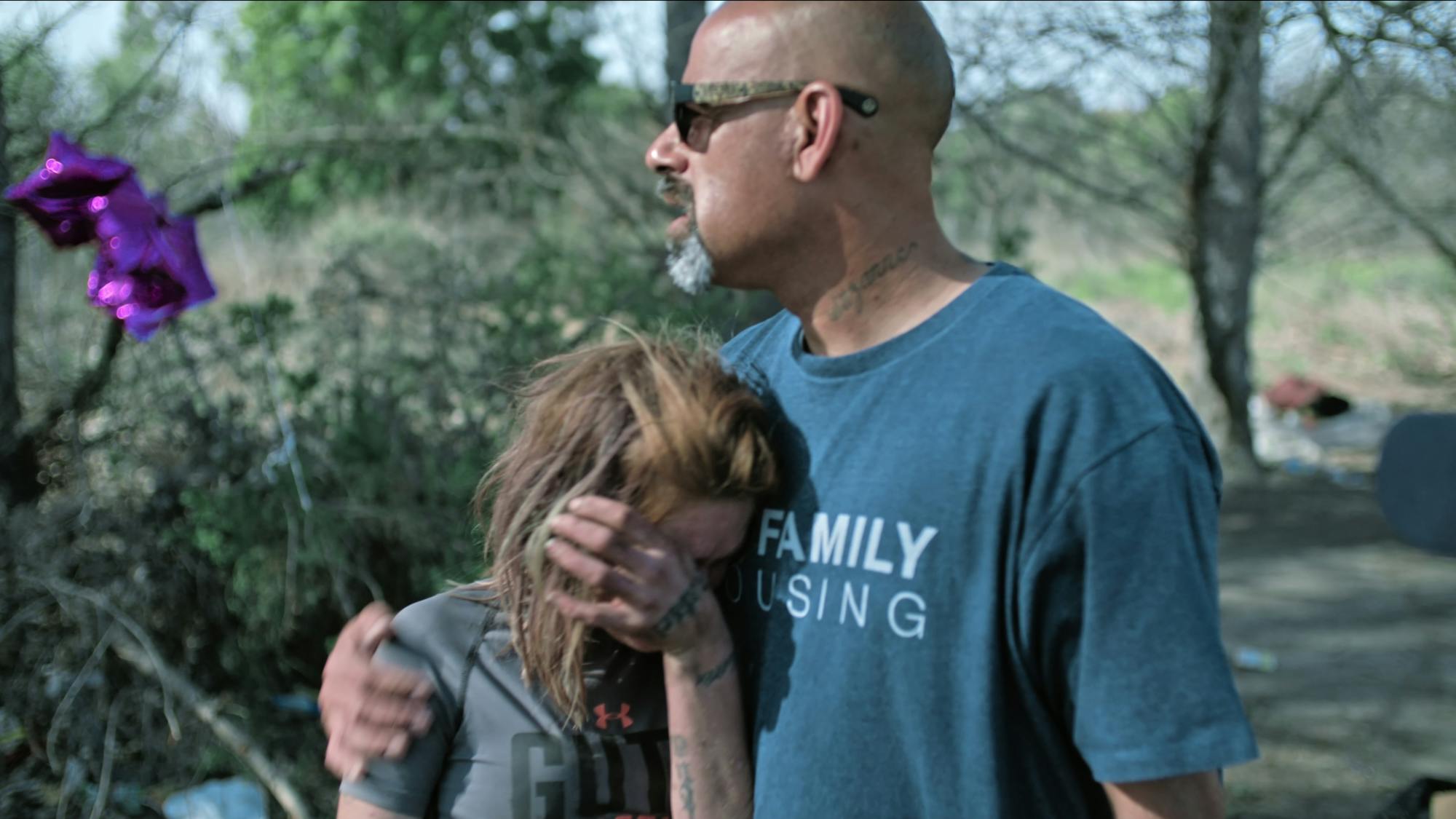
Patricia Wilcox
